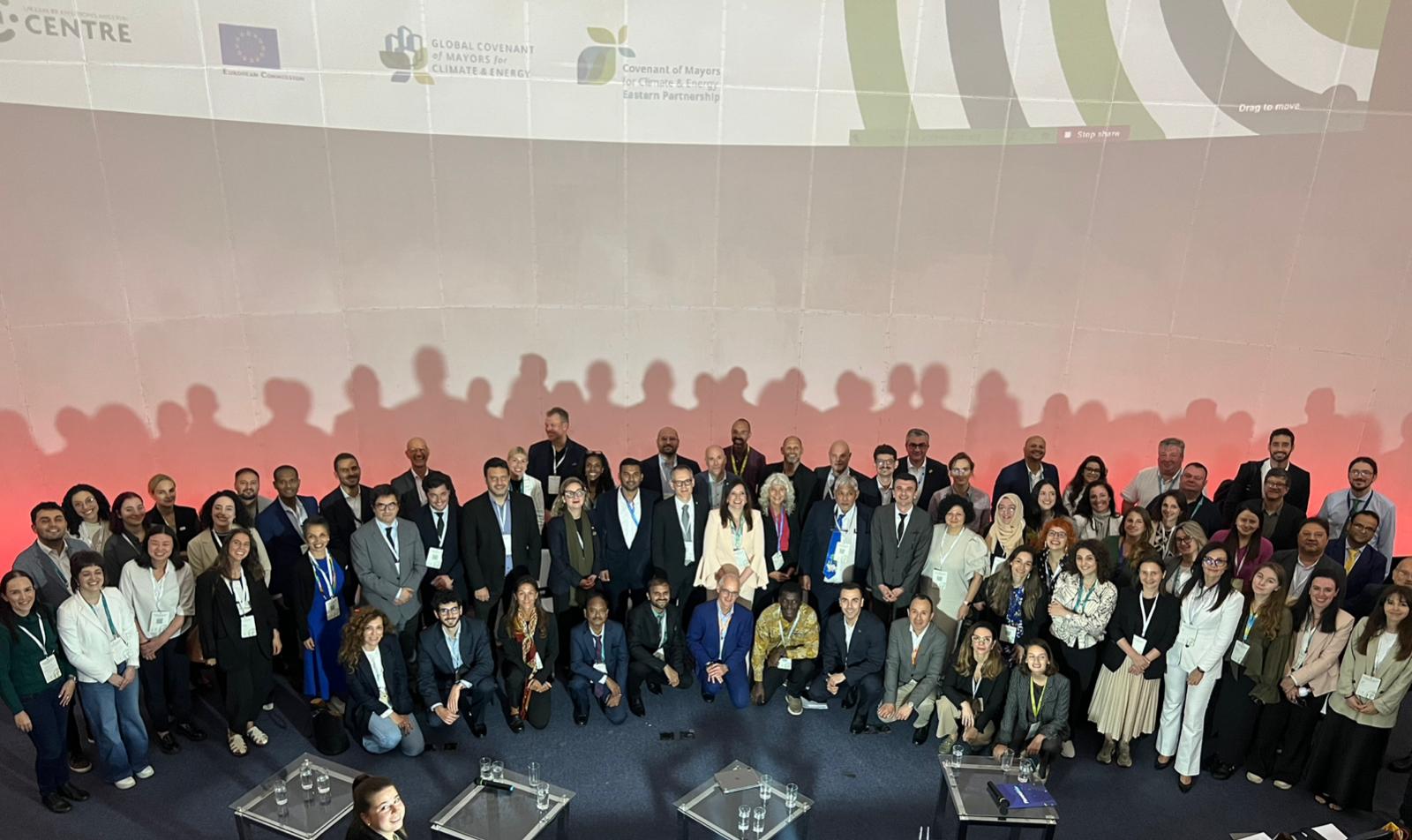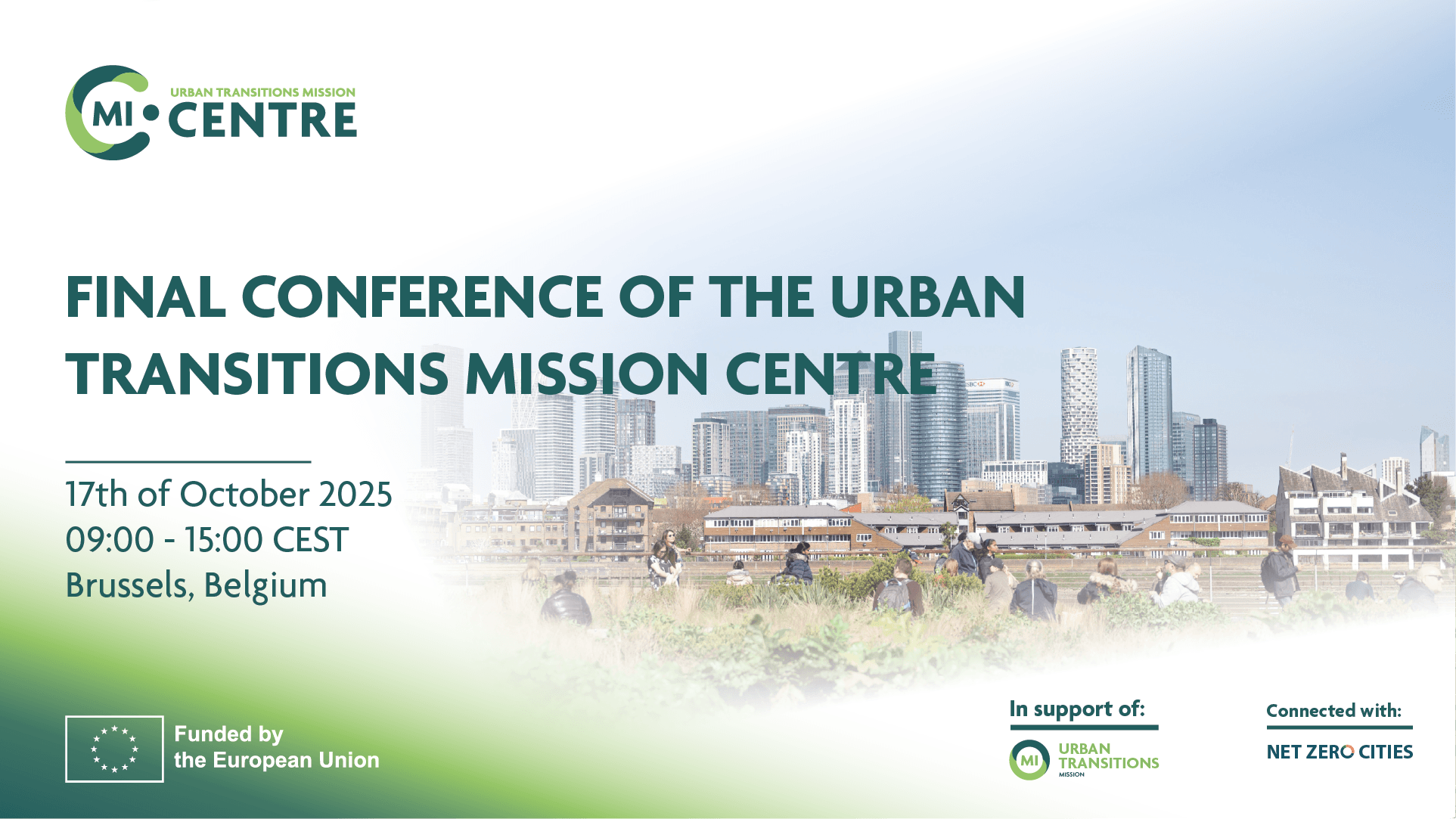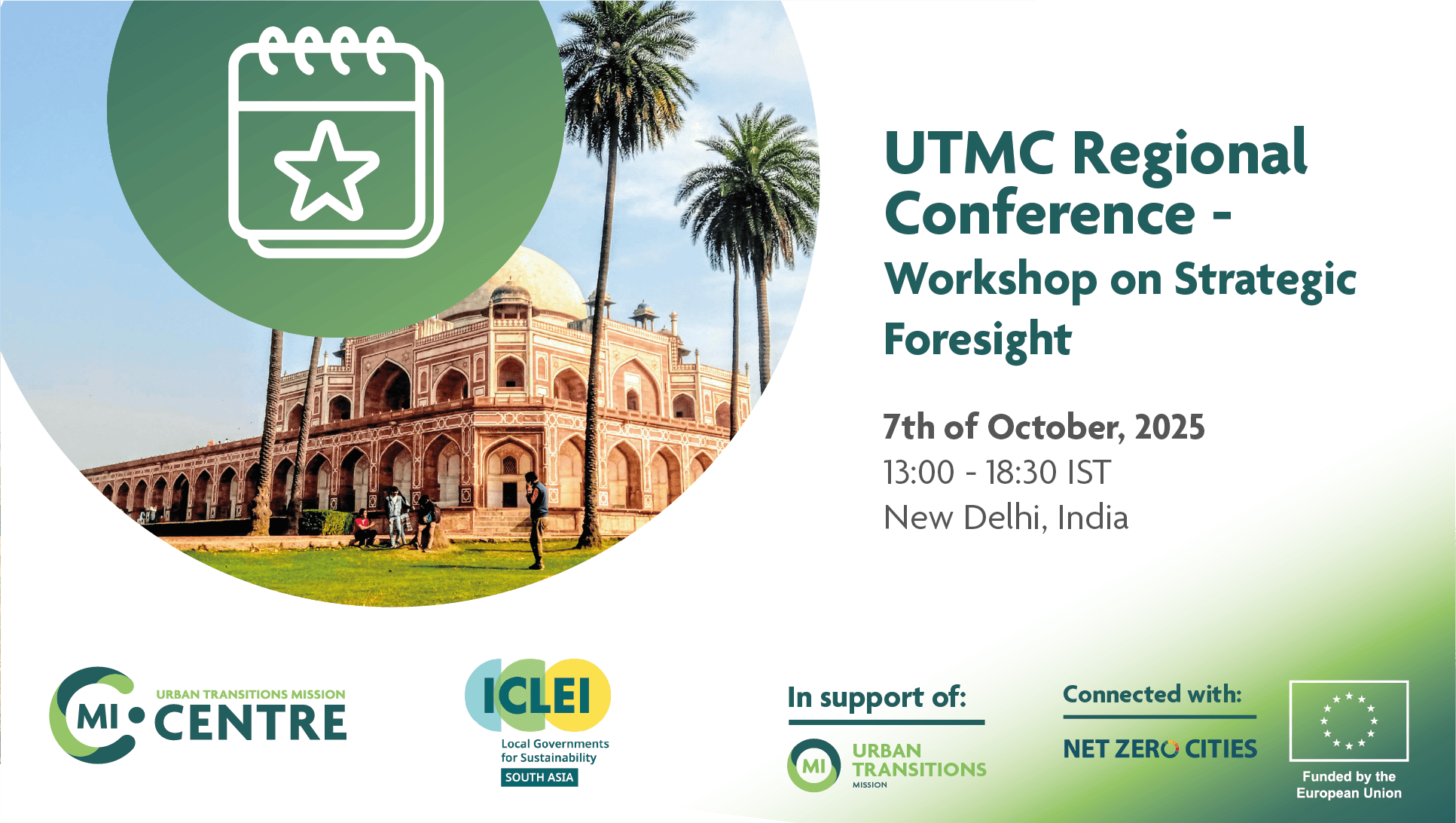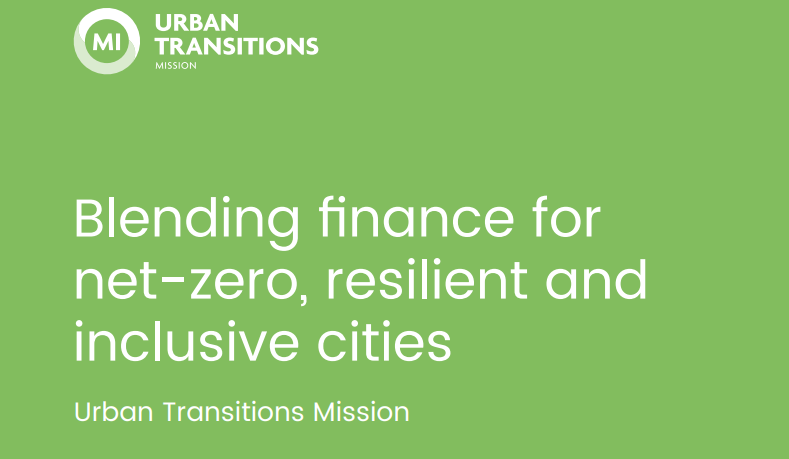Cities consume over 75% of global energy and account for 70% of greenhouse gas emissions, a footprint that grows daily as the urban population expands.
By 2050, over two-thirds of the global population will live in urban areas, placing cities at the forefront of the climate and development agenda.
Cities are leading the change.
The Urban Transitions Mission (UTM) of Mission Innovation was launched with the aim to empower cities to shape urban transitions based on robust knowledge and powerful innovation.
“In just four years, the Urban Transitions Mission of Mission Innovation has become a broker and engine for climate solutions, bringing together 117 cities across world regions and a community of 120 million citizens. These cities are not only cutting emissions. They are also proving that innovation, when shared and scaled, can transform lives.”
Joanna Drake, Deputy Director-General for R&I at the European Commission and Chair of the Mission Innovation Steering Committee.
Co-hosted by the European Commission, the Global Covenant of Mayors for Climate & Energy (GCoM), the Prefecture of Rio, Empresa de Pesquisa Energética (EPE) organized in strategic partnership with the Urban Transitions Mission Centre, and Fundação Getulio Vargas (FGV), the Driving Urban Transitions (DUT) Partnership, Google, Signify and FGV the Global Innovation Summit offered participants a chance to collaborate, learn, and act to help create human-centred cities. Knowledge partners of this year’s Summit included the International Energy Agency ( IEA), the UK Department for Energy Security & Net Zero, the Netherlands Ministry of Climate and Green Growth, the Covenant of Mayors East Coalition for Disaster Resilient Infrastructures (CDRI),, YesAndmore, Viable Cities, the European Network of Living Cities (ENoLL) and the EU & Global Mission Centre.
The Urban Transitions Mission continues to grow and to welcome new cities and so does the Global Innovation Alliance which is preparing to welcome the Netherlands which are in the process of joining as the newest member of the Mission.
Based on the targets cities have set compared to a business-as-usual scenario, the UTM cohort could collectively reduce greenhouse gas (GHG) emissions by more than 280 MtCO2e annually by 2030, and by more than 500 MtCO2e annually by 2050, roughly equivalent to the carbon footprint of 1.1 million round-trip economy class flights between Rio de Janeiro, Brazil and Mumbai, India.
“UTM is now a vibrant community, igniting a global movement addressing the real needs of cities and further bridging the gap between public and private be it in financing or in tangible collaborations with partners from the private sector and academia. UTM is an implementation space where ambition meets innovation and where people remain at the heart of urban energy transitions. We call ourselves THE solutions broker because we are about practical action – city to city, community to community – to make the net-zero, resilient and inclusive transition real.”
Giorgia Rambelli, Director the Urban Transitions Mission.
UTM City2City programme and launch of a second call.
UTM unveiled the eleven pairings of its UTM City2City programme, which connects cities worldwide to cooperate, co-create and identify solutions to pilot innovation to advance net-zero journeys. Co-funded by the European Commission, UTM City2City is designed to strengthen global city to city collaboration and is ready to bring together 28 cities, matched in 11 pairings. The participating cities from five of the pairings met in person for fruitful exchanges hosted by Empresa de Pesquisa Energetica (EPE) in Rio on November 5. In view of the strong appeal of the programme, with one in three UTM cities applying to the first round, UTM launched a second call which will run until 8 January 2026.
The Global Innovation Summit held dense and enriching discussions on the theme of the year: “Unlocking investment for cities: blended finance for urban transitions” after the launch of its groundbreaking publication “Blended finance for net-zero resilient and inclusive cities “ offering actionable recommendations for policymakers on how to tap into urban potential using blended finance..
Indeed, current levels of investments fall short. Traditional public financing and donor support alone are insufficient to meet the magnitude of urban investment needs. The discussions underscored how private capital must be mobilized beyond perceived high risks- financial, political, regulatory, and technical, often discouraging investors -especially in emerging markets.
“Cities around the world are proving that global collaboration is the key to turning climate ambition into real, measurable progress. National governments can seize the opportunity by supporting the creation of practical tools – such as blended finance platforms for blended finance and new pooling mechanisms – that unite private capital with public resources. With the support of UTM as our implementation partner, we are empowering cities to deliver solutions that benefit communities.”
Andy Deacon, co-Managing Director of the Global Covenant of Mayors for Climate and Energy.
At the Summit, participants dived into financing strategies that blend public and private capital to de-risk urban investments, mobilize investment for climate smart infrastructure, strengthen resilience through nature-based solutions, accelerate implementation of net-zero transitions, all the while prioritizing people-centered and inclusive developments.
This high-level get together bringing both the Urban Transitions Mission cohort and its Global Innovation Alliance truly embodied the Brazilian mutirao of collective effort and solidarity with a focus on implementation and development of local pilots at global scale.
Collaboration is the heart of how UTM operates across the planet, connecting cities, countries, the private sector and academia and other Mission Innovation missions creating constellations of partnerships.
Cities are at the forefront of the action to find solutions. “Blue Planet, One of the highlights of the Summit was the launch of the “Blue Planet, Green Futures” photo exhibition showcasing concrete actions by half of the UTM cities for real-life impact in their communities. The exhibition is a collaboration between UTM, the Planetarium and the Prefecture of Rio de Janeiro. It illustrates inspiring solutions to achieve net-zero, resilient, and inclusive transitions and ensure sustainable life on the Blue Planet, the Earth.
One of the highlights of the summit was the launch of ‘A City Assessment on lighting development in climate action plans,’ published in collaboration with Signify and the Global Covenant of Mayors for Climate and Energy. The publication offers food for thoughts on the current state of play in lighting and shares actionable blueprints for city practitioners. It sheds lights on actionable recommendations to accelerate and scale the uptake of sustainable lighting in cities.
Looking Ahead
As the Urban Transitions Mission looks toward 2026, it will continue to broker partnerships, notably through the second call for the UTM City2City programme, mobilize the power of blended-finance, and continue to scale innovation. In 2026 UTM will put its focus on the role of digital solutions and AI in implementing sustainable, inclusive urban transitions to net-zero. Through shared purpose and practical collaboration, UTM is demonstrating that cities are not just key participants in the global energy transition – they are the driving force behind it.
About the Urban Transitions Mission
The Urban Transitions Mission (UTM) is one of the seven missions of Mission Innovation, a global initiative that champions action and investment in research, development and demonstration to make clean energy affordable, attractive and accessible for all, thus accelerating progress towards the Paris Agreement goals and pathways to net zero. ‘Missions’ are public-private innovation alliances that catalyse global action behind ambitious and inspirational innovation goals.
The UTM was launched at COP26 in Glasgow by its co-leads: the European Commission (DG Research & Innovation), the Global Covenant of Mayors and the Joint Partnership Initiative (JPI) Urban Europe. The global mission builds on the European Mission on 100 Climate-Neutral and Smart Cities and receives support from the Urban Transitions Mission Centre, a hub for global knowledge exchange on cities and climate launched in December 2022 with EUR 2 million in EU funding under Horizon Europe.
The Urban Transitions Mission also relies on expertise and support from its Global Innovation Alliance. In addition to the co-leads, the growing alliance includes Austria, Brazil, India, Netherlands (in progress), Saudi Arabia, Spain, Sweden, the UK and the MI Innovation Community on Affordable Heating and Cooling of Buildings as core members. The UNFCCC Global Innovation Hub, IEA, IRENA, ICLEI, EIT Climate-KIC, ENoLL, the Doughnut Economics Action Lab, GeSI and Student Energy participate in a supporting role. The alliance also includes private sector partners such as Signify, T-Systems and Google.
The UTM city cohort now includes 118 cities from 46 countries, and it is set to grow to 300 cities by 2030. Based on the targets they have set compared to a business-as-usual scenario, the UTM cities could collectively reduce greenhouse gas (GHG) emissions by more than 280 MtCO2e annually by 2030 and by more than 500 MtCO2e annually by 2050.
This is roughly equivalent to the carbon footprint of 1.1 million round-trip economy class flights between Rio de Janeiro, Brazil and Mumbai, India.






